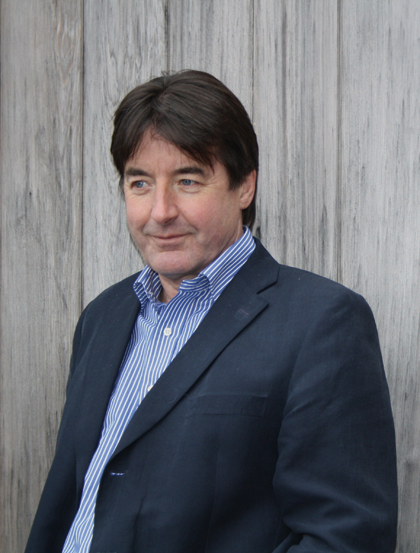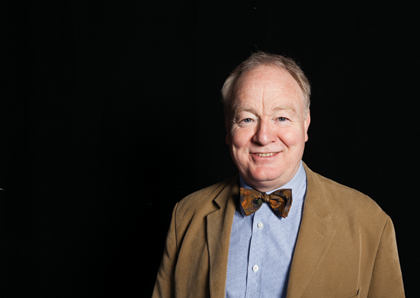
How has the architectural education system changes over the years?
At the beginning of 2013, the creative sectors were faced with the idea that key subjects studied in England were to be replaced by alternative certificates that would shape the future of education. The creative subjects would have been very much affected by this shift. Then, in February, in response to the news that plans to scrap GCSEs in key subjects in England and replace them with English Baccalaureate Certificates are being abandoned by the government, RIBA President Angela Brady said: ?The RIBA is delighted with the Government??s confirmation that creative subjects will be included in the eight key subject measures for new GCSEs. The creative sector, including architecture, is a vital contributor to the UK economy; the teaching of creative subjects must be maintained to retain our creative assets and nurture future talent. However we are still concerned at the league table measures which do not include creative subjects, we will continue to lobby the Government to ensure creative subjects are not undermined.?
How has the architectural education system changed since you studied towards your qualifications? What can the education system do to further recognise the importance and value in creative subjects such as architecture?

Vincent Kirk, Director, KKE Architects
Once a year, on a Saturday morning, I will pop in to the school nearest our studio in our county town to talk to fifth form students about architecture as a career. This is the school my son and daughter went to on the way to art colleges in London and, with luck, to rewarding careers in music and graphics respectively. Looking back over their time there, I am struck how little of it was spent in what turned out to be their chosen area of work. Why is the school curriculum so attentive to the different aspects of science and maths and so generic about the visual arts? Maths (Pure and Applied), Physics, Chemistry and Biology block out half the GCSE timetable of our creative-minded 15 year olds with absolute confidence, despite being in existence as separate disciplines for merely a few hundred years. Leonardo would have had no interest in the dividing lines we accept from our schools as absolute.
Throw in three languages (including our own) and the only creative activity our student is left with is a few periods of writing and a catch-all topic called ‘Art’.
From this lonely citadel, they hope to venture out into the world and become a designer of anything from fonts to foundations, sports wear to sports stadia.
If at this point they decide architecture is the path for them, teachers unerringly point to Maths and Physics as essentials and to Art as a possible AS to ‘keep your hand in drawing’.
Back at my Saturday morning session, I hear this time and again. I take a different position. Of course you need to be numerate, so, yes, arithmetic is essential, at least to the level of a normal 11 year old. ‘What about geometry?’ the anxious parents ask. Actually, a few hours on any CAD drawing programme will teach you everything you need to know about the properties of shapes.
In our studio, we give work experience to children from a number of schools in our city. Their ability to learn is astounding compared with professionals on the higher flatlands of the learning curve. We also always have a Part I (graduate) architecture student and a Part II (post-grad) at any one time. What we see is that the school children exhibit intelligence and ability to learn tasks and processes but tend to be restricted graphically.
After 3 – or 5 -years at School of Architecture, our student Assistants gain the analytical and presentational skills needed for our profession. How much better would they be if they had learnt them at school? Our schools need to recognise this. I will be back on the case at our next careers morning.

Ian Phillips, Technical Director, EDGE
??The architectural education system has altered little in, probably, around a century and certainly not much since I started studying in the early 1970s. It is still an enormously long course, based on a Part 1, 2 and 3 structure, with intervening periods spent working in offices, that inevitably has a high drop-out rate. With the advent of high tuition fees in schools and lower salaries within the industry, there is likely to be an increasing disincentive to study for the profession unless change takes place, since students will accrue levels of debt that will be difficult to pay off.
Architectural courses have always aimed to address the creative, technical, professional and ethical requirements of an architect’s career, but have increasingly tended towards becoming ideologically driven, with the practicalities – building construction, systems, materials etc – being treated as peripheral, poorly integrated into the process of design as it presently takes place within the college environment.
This ongoing process is reflected within the CVs that our studio receives from students, which often contain iconic conceptual schemes or urban propositions shaped by the current creed, that leave you wondering where, or whether, they would fit in with the real world of the office.????The current educational drift leads to a profession perceived as elitist with a tendency to shift technological elements to consultants and technicians, resulting in a diminution in the role of the architect, along with a belief by others that they have the ability to act in an architectural capacity.????What really differentiates architects from the technicians and others is design creativity, allied with the capacity to analyse and understand client needs and the background know how that applies technology to achieve inventive, innovative results.
Since few will be able to afford to spend five years in education, it is possible, indeed probable, that, though the nature of architectural education continues to be similar to the current model, there will be a movement towards shorter courses, with less time spent in college and more time in the practical work environment.
A background understanding of creative subjects from early schooling has generally formed an essential part of the make-up of people going into architecture.
Creativity is a major role in shaping our environment and surroundings, impacting on architecture, interiors, advertising, art, graphics, fashion, product design, and so on. The education system could and should do more, via creative subjects at GCSE level, to foster an understanding within students, of its influence, importance and value.
Outside of the industry, there appears to be little appreciation of what an architect does and the education system could also play an important role in cultivating an understanding of this in people who might become possible clients, in addition to those who may become designers.

Conrad Smith, Managing Director of ReardonSmith Architects
Creative professions play a vital role in shaping the fabric of our society. Architecture has the power to affect people??s mindsets, which influences how they communicate with others and even transform the way different cultures behave. For example, oppressive, monolithic structures built in Eastern Bloc countries during the 1940s and 50s were psychological tools for maintaining the status quo. During this same era, the light-filled, modern buildings constructed in Scandinavia helped shape the progressive attitude of its citizens. So it is essential that not only the government, but we as professionals, recognise the significant contribution a solid training in architecture can bring to our communities. We need to lead by example if we want our government to value creative fields of study.
When I was a student, longer ago than I care to admit, at Brighton Polytechnic, I followed the Practical Architecture course and was one of seven students to graduate with distinction in my diploma year. Back then, we were fortunate that the curriculum focused not only upon imaginative designs and presentations, it also gave us an introduction in how to evaluate the ?build-ability?? of a creative idea. Today??s educational institutions seem to place less emphasis upon practicality, which means this knowledge must be learned on the job.
At ReardonSmith, we wholeheartedly support the idea of inspiring and nurturing apprentices. Students learn by assisting an architect and soaking-up as much information as possible ?? as well as by being thrown into the deep end. Ultimately, any project is a team effort, so students need to know where their limitations lie and how to work collaboratively. Many architects have worked with us for their Part III qualifications. In fact, one person has been with us for eight years ?? initially for a two-week work experience at the age of 16, then over his university holidays, and now we are sponsoring his Part III studies. We also have two recent graduates in our office who are using their sound educational foundations to learn how balancing a project??s constraints with its creative ?big picture?? will produce a better result.
Another way we encourage students is by sponsoring the Sleep ReardonSmith Student Award, which is part of Sleep, Europe??s leading annual event dedicated to excellence in hotel architecture and design. For 2013, the competition brief is to create a masterplan for a new luxury hotel and residential marina development on the Southern Adriatic coast ?? and this year we will offer a work experience placement to one of the finalists.
As custodians of our communities?? cultural inheritance, it is crucial that we mentor the people who will be shaping our cityscapes in the years ahead. ?Urban sculptures?? going-up in London like the ?Cheesegrater?? and the ?Walkie-Talkie?? could be seen as examples of design for design??s sake, arrogant atrocities borne out of misguided ambitions which prioritise placing an architect??s thumbprint on the skyline over creating a building that fits into the rhythms and context of our city. Buildings have the power to enrich the lives of people and so do their architects.



